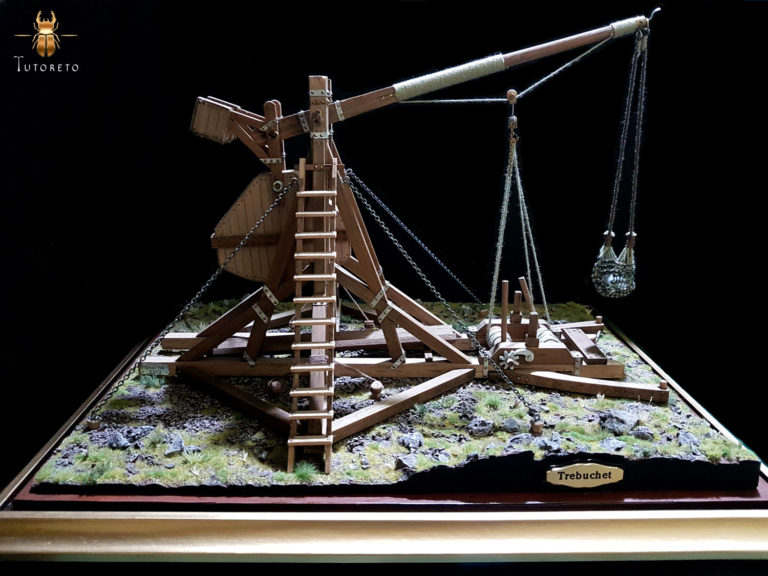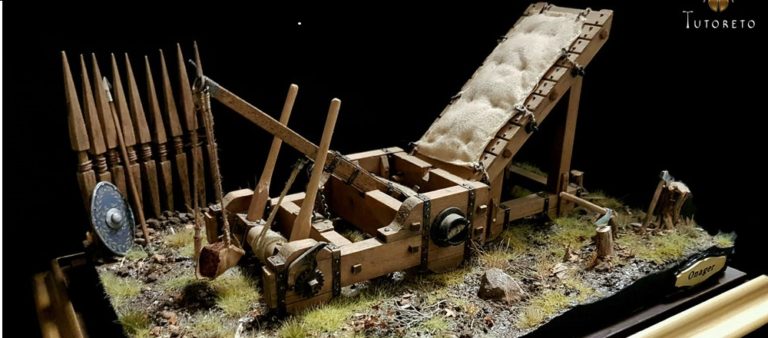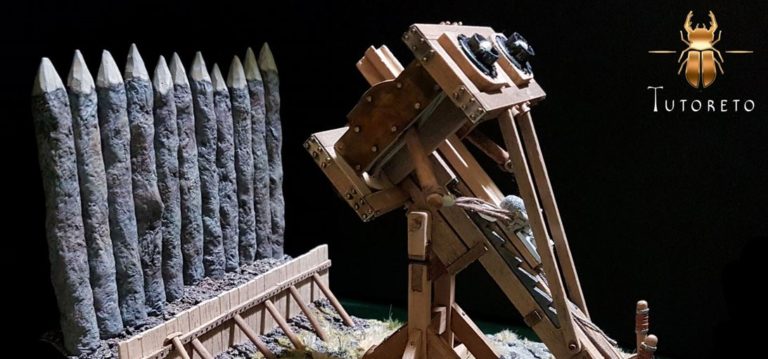The first mangonel ballistae used a fixed counterweight at one end of the mast, moving the load from a horizontal to a vertical position. This eventually caused the load to make irregular and abrupt movements, and consecuently affecting firing accuracy.
This fault was corrected by engineers by hinging the counterweight. This counterweight could contein up to 10 tones of earth or stones. This called trebuched, could hurle hundred kilos of stones to over 200m distance with great accuracy.
Besieging a town or a castle at that time was an enormous task, so these machines needed to be huge as well. So huge and difficult to move that they could require even over 120 men for a single machine.
We could distinguis between fixed machines, such as counterweight and spring-powered machines used to break though defences, and approach machines such as tonnelons or assault towers that were used to approach the fortified walls.
Stone-throwing machine
These machines were a human traction machines. They could only throw light projectiles (10kg) to a 50m distance in a firing rate of one load per minute. That means they did little damage to a wall but a devastating effect on charges of knights in armour.
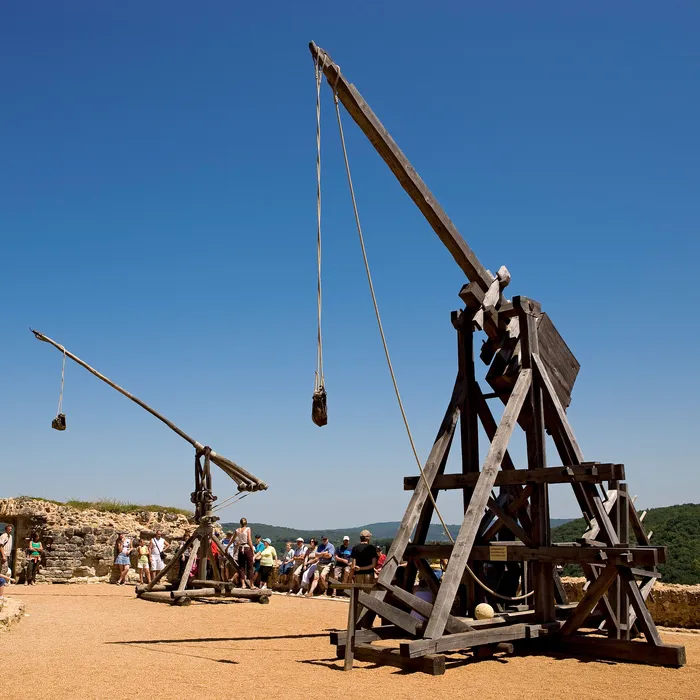
Bricole
In order to improve the performance of these stone-throwing machines, a metal counterweight system was introduced. The firing rate was increased and because of that, they were usually positioned on fortress ramparts.
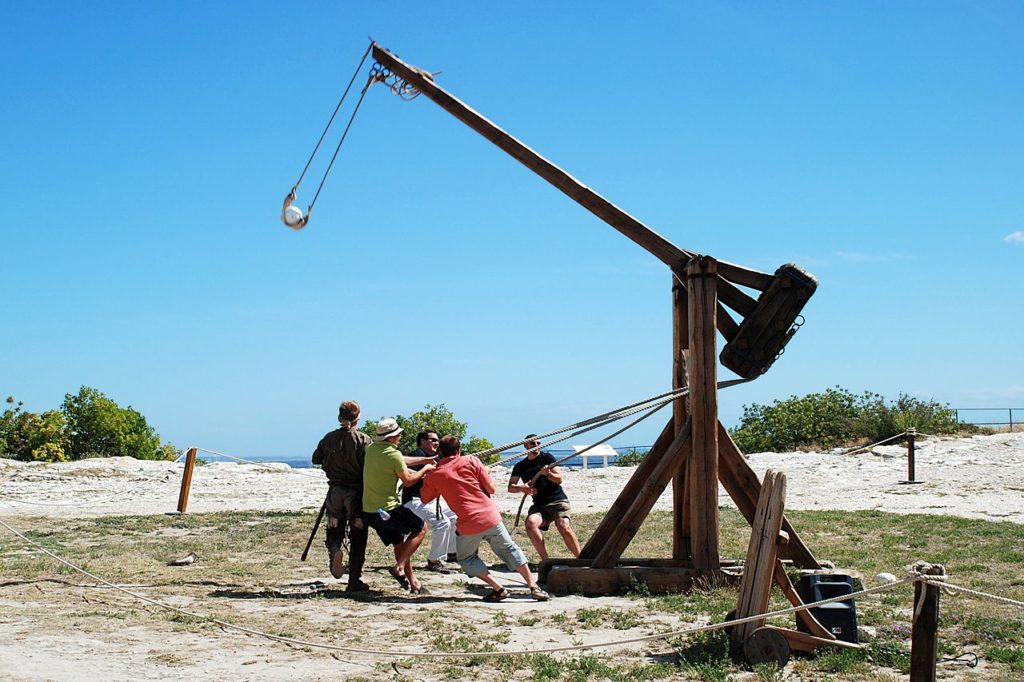
Mangonel with quarryman`s wheels
This siege machines had a fixed counterweight. Due to the fact that they hadn´t discovered yet the advantages of the hinged counterweight, these machines were not properly balanced.
In order to lower the mast the machine had a winch pulled by large wheels driven by men either on the inside or on the outside.
The counterweight weighed several tones and sometimes ropes were added to speed up the movement.
Their firing rate was 2 to 3 loads an hour and their main fault came from the fact that load inside the counterweight always ended up moving and consecuently caused the damage of the structure.
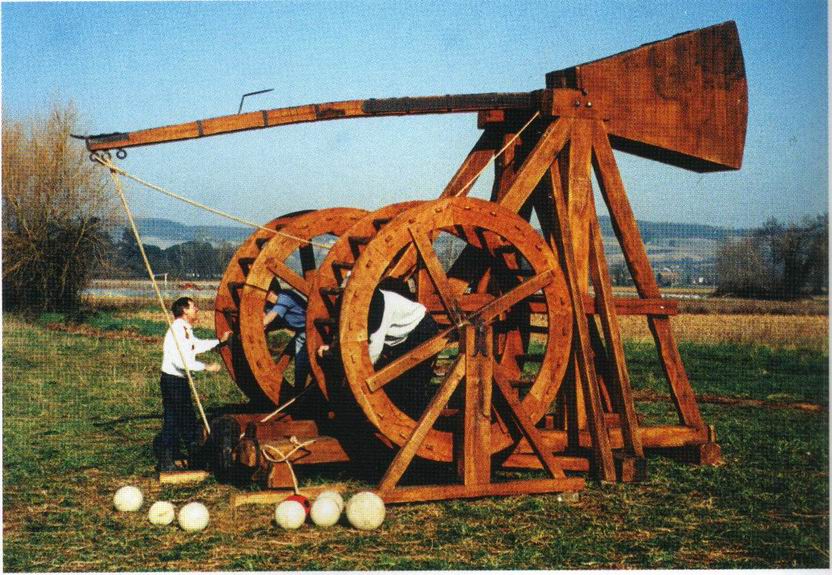
Trebuchet
The trebuchet was the first siege machine featured with a hinged counterweight. Their main goal was to pound a specific part of a wall, preferably a weak part such as an arrow loop or latrine, to make an opening.
Their firing rate was quite low, one or two loads an hour, but they suposed a real arm of deterrence.
Below you can find a link to another post in my blog where you will find a trebuchet model I made some years ago.
Couillard
This was the most elaborated of all counterweight machines. Due to the fact that the load was cut by half, the handling of this siege machine was easier than the other models. Just one pole was necessary and consecuently the building process was also simplified. This pole was sometimes fixed to the ground, but most of the time it was fixed onto the wooden chasis.
Despite the fact that this machine didn´t perform as well as the trebuchet, its firing rate was five to six times greater and it didn´t require as large team to make it work. Because of all these reasons, this siege machine was able to compete with gunpowder artillery for a long time. It could reaquire just a small tem of four men to hurle 35kg stones over 180m with a firing rate of ten shots an hour.
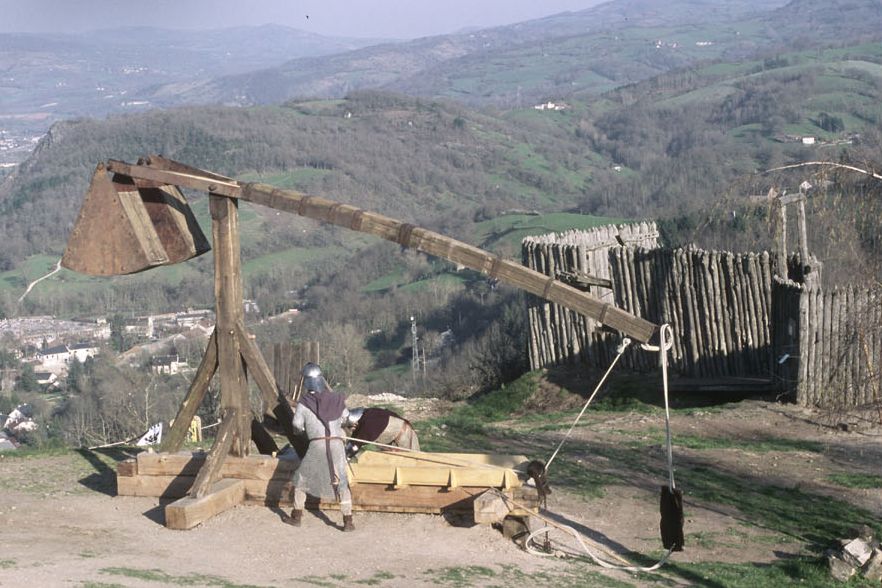
Spring-powered machines
These siege machines had a Roman origin, and they were originaly called “catapults”. They were forgotten with tha fall of the Roman Empire and from the 11th century onwards they were replaced by the post-mounted crossbow.
the bow was made of wood, sinew and tendons until the middle of the 15th century. Later, they were replaced by forged and hardened steel bows.
two men were necessary to bend the bow, and the firing range with a 1m long 100g bolt, exceeded 300m. this ballista remained very accurate when there was no wind. One chronicler wrote of one of these arrows going through three men and a horse before lodging itself in door 300m away.
Below you can find a link to another post in my blog where you will find a Roman Ballista model I made some years ago.
Source: These information was taken from War machines in the Middle Ages by Renaud Beffeyte, a very recommended read for all those interested in siege machines.

